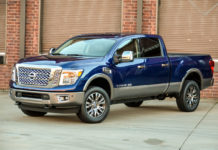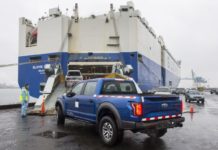The driver of the bus carrying the Garfield High School girls softball team that hit a brick and concrete footbridge was using a GPS navigation system that routed the tall bus under the 9-foot bridge, the charter company's president said Thursday.
Steve Abegg, president of Journey Lines in Lynnwood, said the off-the-shelf navigation unit had settings for car, motorcycle, bus or truck.
Although the unit was set for a bus, it chose a route through the Washington Park Arboretum that did not provide enough clearance for the nearly 12-foot-high vehicle, Abegg said. The driver told police he did not see the flashing lights or yellow sign posting the bridge height.
“We haven't really had serious problems with anything, but here it's presented a problem that we didn't consider,” Abegg said of the GPS unit. “We just thought it would be a safe route because, why else would they have a selection for a bus?”
Some models that offer routing for larger vehicles base directions on general information — such as routes that are closed to buses — rather than painstakingly collected data such as bridge heights, GPS experts say.
The accident Wednesday afternoon sheared the roof off the charter bus and sent 21 students and a coach returning from a game in Kirkland to the hospital. All were treated and released.
|
|
“Sixteen softball players stayed home from school Thursday to recover, said Seattle Public Schools spokesman David Tucker.
The nearly century-old concrete and brick footbridge in the arboretum was not damaged, other than a few minor chips and scratches, city officials said.
The bus driver, whose name was not released by police or the company, was cited for “hitting a structure with impaired clearance” and given a $154 ticket.
A spokesman for Garmin Ltd., the manufacturer of the GPS unit used by Journey Lines, said an independent company that also supplies information to online mapping sites provides its underlying data.
Bus routes typically steer drivers away from roads or turns where larger vehicles are not allowed, but don't take specific bridge heights into account, said Garmin spokesman Ted Gartner.
“The bigger comment here is that drivers always need to obey all the rules of the road at all times,” he said.
“Stoplights aren't in our databases, either, but you're still expected to stop for stoplights.”
A handful of companies do offer GPS systems — largely used by commercial truckers — that allow drivers to enter the height of their vehicles and then route them around bridges that would be too low.
“It's such a painful process to collect the data,” said Edward Friedman of TeleType GPS, which released its WorldNav truck system three months ago. “You actually have to … drive around and look at the heights of the bridges and go to all the counties.”
Mark Hornung, senior vice president of operations for the manufacturer of CoPilot Truck, another GPS system for laptops and mobile devices that takes clearance heights into account, said some who buy cheaper generic systems wind up in tough spots.
Matt Bremner, business manager at Western Motorcoach, which sells luxury RVs in Lynnwood, said most GPS models he's seen are geared for cars. Those driving larger vehicles just need to apply common sense and pay attention to where they're going.
“If this guy was a professional driver, he should have known his bus was 12 feet high and couldn't fit into a 9-foot box,” he said.
Abegg declined to answer other questions about the accident or the driver, saying the company was still investigating.
Journey Lines received the highest “satisfactory” rating from the state Utilities and Transportation Commission during its most recent inspection two months ago, said spokeswoman Marilyn Meehan.
But the company was fined $300 in 2006 after parents complained that a bus taking students from Lowell Elementary in Everett on a field trip had exhaust fumes leaking up through the floors.
Inspectors also found emergency lights that were not working and mold growing on the bus — all problems that were corrected, Meehan said.
The state also fined the company $200 in 1994 for broken warning lights and failing to properly maintain driver qualification files, Meehan said.
State Patrol records indicate that Journey Lines buses were involved in accidents in 1998 and 2005, with one injury each, no fatalities, and no written citations or violations, Meehan said.
The charter company has the highest safety rating from the Federal Motor Carrier Safety Administration, which found no problems during its six most recent inspections, according to the agency's database.









